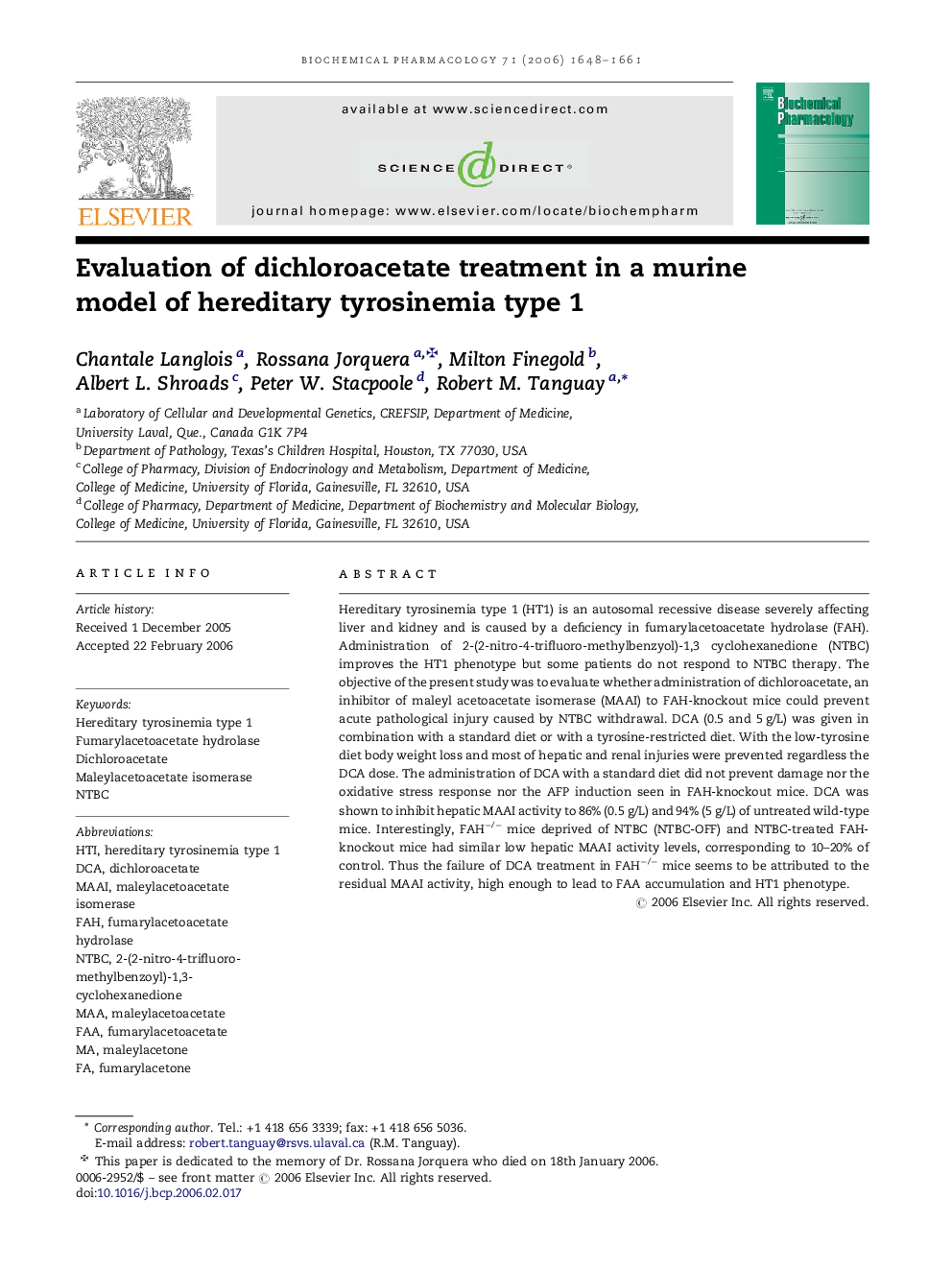| کد مقاله | کد نشریه | سال انتشار | مقاله انگلیسی | نسخه تمام متن |
|---|---|---|---|---|
| 2515566 | 1118531 | 2006 | 14 صفحه PDF | دانلود رایگان |

Hereditary tyrosinemia type 1 (HT1) is an autosomal recessive disease severely affecting liver and kidney and is caused by a deficiency in fumarylacetoacetate hydrolase (FAH). Administration of 2-(2-nitro-4-trifluoro-methylbenzyol)-1,3 cyclohexanedione (NTBC) improves the HT1 phenotype but some patients do not respond to NTBC therapy. The objective of the present study was to evaluate whether administration of dichloroacetate, an inhibitor of maleyl acetoacetate isomerase (MAAI) to FAH-knockout mice could prevent acute pathological injury caused by NTBC withdrawal. DCA (0.5 and 5 g/L) was given in combination with a standard diet or with a tyrosine-restricted diet. With the low-tyrosine diet body weight loss and most of hepatic and renal injuries were prevented regardless the DCA dose. The administration of DCA with a standard diet did not prevent damage nor the oxidative stress response nor the AFP induction seen in FAH-knockout mice. DCA was shown to inhibit hepatic MAAI activity to 86% (0.5 g/L) and 94% (5 g/L) of untreated wild-type mice. Interestingly, FAH−/− mice deprived of NTBC (NTBC-OFF) and NTBC-treated FAH-knockout mice had similar low hepatic MAAI activity levels, corresponding to 10–20% of control. Thus the failure of DCA treatment in FAH−/− mice seems to be attributed to the residual MAAI activity, high enough to lead to FAA accumulation and HT1 phenotype.
Journal: Biochemical Pharmacology - Volume 71, Issue 11, 28 May 2006, Pages 1648–1661